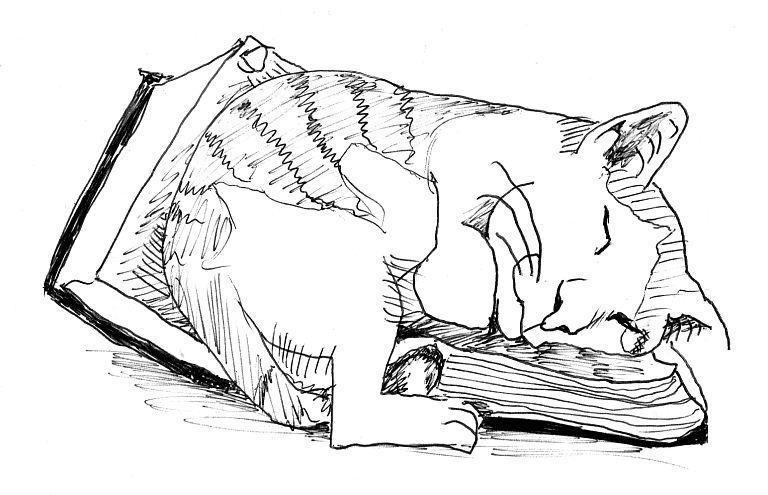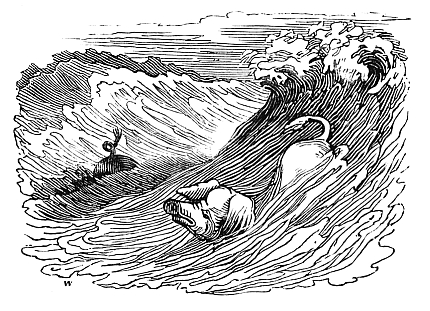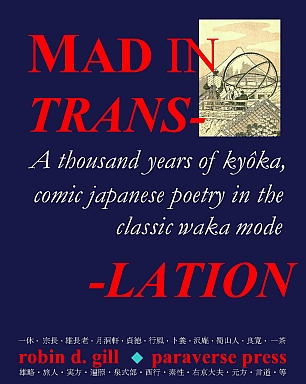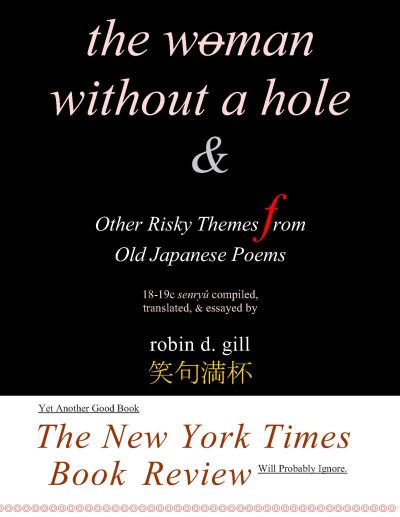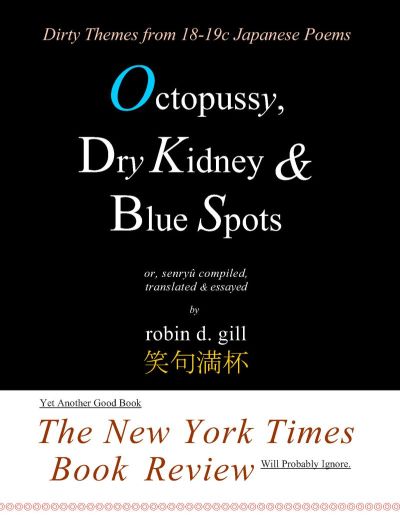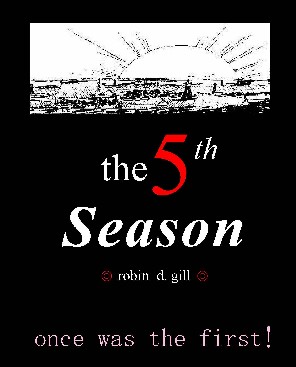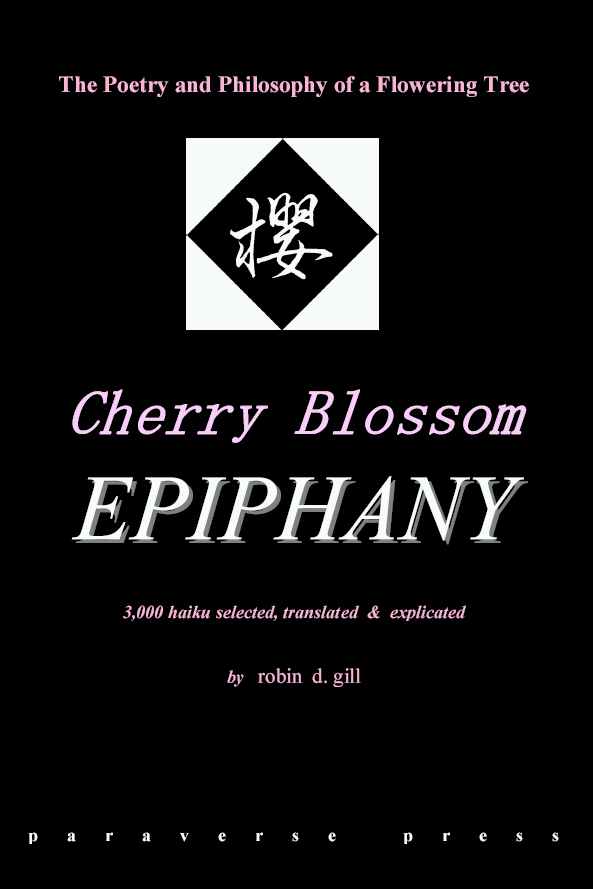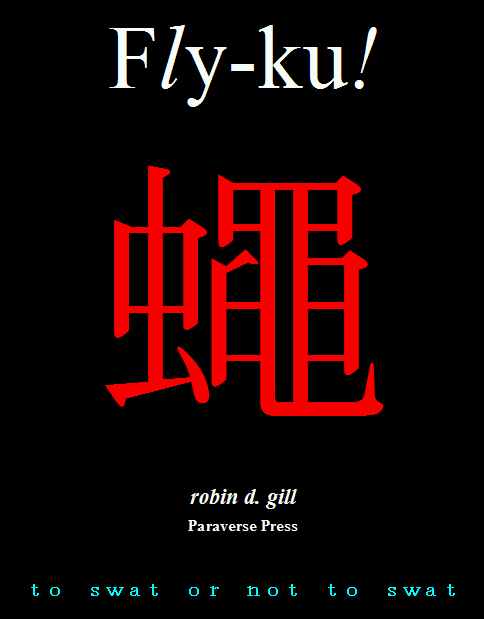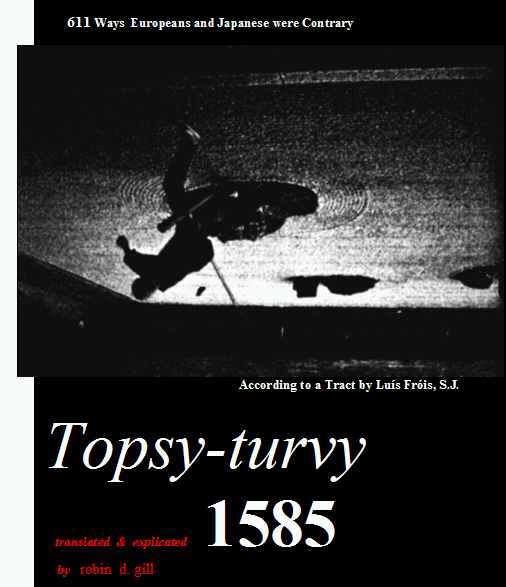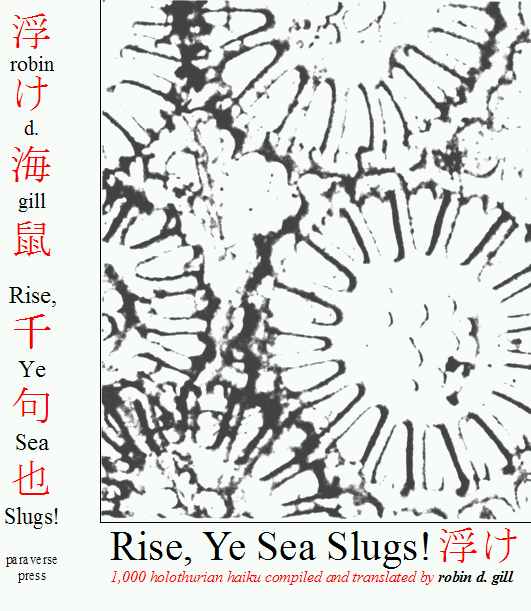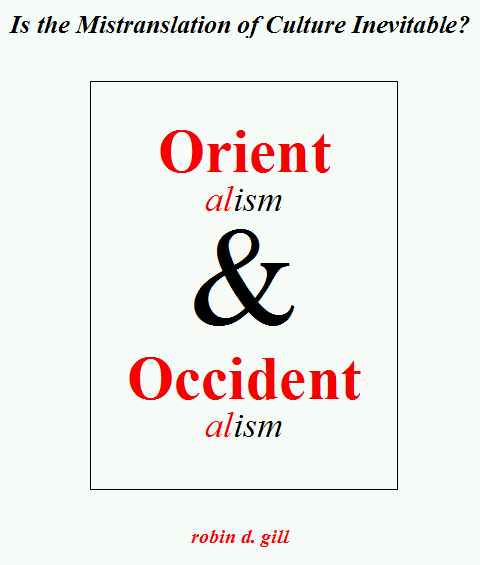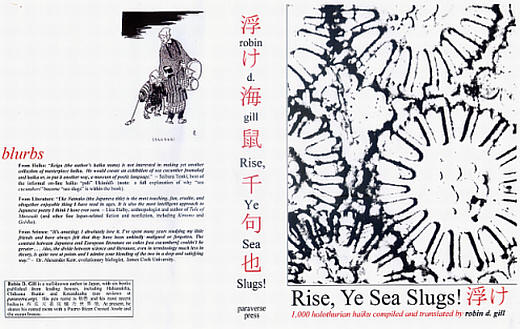|
new books from
paraverse press
where creative nonfiction is not journalism.
~~~~~~~~~~~~~~~~~~~~~~~~~~~~~~~~~~~~~~~~~~~~~~~~~~~~~~~~~~~~~~~~~~~~~~~~~~~~~~~~~~~~~~~~~~~~~~~~
All books may be ordered from Amazon, Barnes & Noble, Powell's and top
bookstores. They are also 100% viewable at Google Books.
an essay into felinity The Cat Who Thought Too Much Isbn # 9780984092321 and $25. A cat book for people who think, too. 100 illustrations from the author's journals. If the dog is a child’s “best friend,” the cat is a mature writer’s ideal companion. See the description with a list of chapters or the entire 312 page work at Google Books. (On sale from 2010/1/21) Readers who appreciate the cat chapters in Lorenz's The Dog and Vicki Hearne's Adam's Task, and books such as Barbara Holland's The Secrets of the Cat and Leonard Michaels' A Cat, or Crompton's The Snake may like it. ~~~~~~~~~~~~~~~~~~~~~~~~~~~~~~~~~~~~~~~~~~~~~~~~~~~~~~~~~~~~~~~~~~~~~~~~~~~~~~~~~~~~~~~~~~~~~~~~~~~~~~~~~~~~
Isbn # 9780984092314 and
$22.22. The cover jpeg failed to reduce, so we just give the cover
picture. Catalog: 1. Poetry – rhyme, paraversing, composite translation as
a game. 2. Translation of poetry – multiple readings. 3. Japanese
poetry in translation. 4. Chinese poetry in translation. 5.
Metaphysical poetry – take-offs and retorts. 6. Found poetry –
distilling prose. 7. Y. Hoffmann, D. Hofstadter, J. Mostow, H. Sato, E.
Weinberger. 8. Puzzles creating a product – contesting poetry.
Please see the book description. Isbn # 9780984092307 and $23.45 (if I recall right). This Reader is a selection from “Mad in Translation – a thousand years of kyōka, comic Japanese poetry in the classic waka mode,” a 2000-poem, 200-chapter, 740-page monster of a book. It offers a 300-page double distillation high-proof sample of the poetry and prose, with improved translations, re-considered opinions and additional snake-legs (explanation some scholars may not need). The scattershot of two-page chapters and notes have been compounded into a score of cannonball-sized thematic chapters with just enough weight to bowl over most specialists yet, hopefully, not bore the amateur and sink a potentially broad-beamed readership. Mad Reflection – on what makes good poetry bad and
bad poetry good. 23
~~~~~~~~~~~~~~~~~~~~~~~~~~~~~~~~~~~~~~~~~~~~~~~~~~~~~~~~~~~~~~~~~~~~~~~~~~~~~~~~~~~~~~~~~~~~~~~
1. Japanese poetry – comic – translations into English 2. English poetry – comic – translations from Japanese. 3. Kyōka (mad poems) – 8c ~ 19c. 4. Waka – 8c ~ 19c. 5. Kyōku (kyōka-like haiku). 5. Japanese poets – Bokuyō, Lady Daibu, Getsudōkan, Henjō, Ikkyū, Lady Ise, Issa, Jakuren, Jihinari, Kisshū, Kōfū, Kotomichi, Magao, Meshimori, Mitoku, Motokata, Ryōkan, Saigyō, Sanekata, Sanetaka, Sengai, Izumi Shikibu, Shokusanjin (Ōta Nanpo), Shunzei, Sōchō, Sosei, Tabito, Takuan, Teiryū, Teitoku, Tameie, Tsurayuki, Yakamochi, Yayū, Yomo no Akara (Ōta Nanpo), Yūchōrō, etc.. This is the neglected half of waka, the greater part of the traditional poetry of Japan, Englished for the first time. Over a hundred years ago, Lafcadio Hearn wrote the following regarding his Goblin Poetry: "The word ‘kyoka’ is written with a Chinese character signifying ‘insane’ or ‘crazy’; and it means a particular and extraordinary variety of comic poetry. The form is that of the classic tanka of thirty-one syllables (arranged 57577); — but the subjects are always the extreme reverse of classical; and the artistic effects depend upon methods of verbal jugglery which cannot be explained without the help of numerous examples . . . a class of Japanese poetry about which little or nothing has yet been written in English . . . " Oddly enough, what he writes is still the case. For more information about this groundbreaking book, see the description! ~~~~~~~~~~~~~~~~~~~~~~~~~~~~~~~~~~~~~~~~~~~~~~~~~~~~~~~~~~~~~~~~~~~~~~~~~~~~~~~~~~~~~~~~~~~~~~~~~~~~~~~~~~~~
The Woman Without a Hole – & other risky themes from old japanese poems (isbn 9780974261850) pp 504 = $30. In UK 15 pounds AND Octopussy, Dry Kidney & Blue Spots – dirty themes from 18-19c japanese poems (isbn 9780974261881) are the same book published under different title as an experiment. The book has 1,300+ 18-19c senryu & zappai of the type Blyth called unprintable and, includes the original Japanese, indexes etc. . On sale from Halloween 2007. Senryu are, after haiku, the best known genre of Japanese poetry in English. A large proportion of the Japanese originals treat off-color subjects, so much so that books about the sexual practices of 18-19c Japan generally cite many senryu as documentation. Yet, less than a hundred dirty senryu have been introduced in English until this book, with 1,300 translated senryu (and the originals). Whether or not you have heard of senryu, if you are literate enough to practice what Emerson called “creative reading,” these essays in sex, humor, Japanese poetry, urban legend, metaphor and translation should delight you. I will continue the description below rather than on a separate page because I cannot figure out how to put the other cover next to this one other than creating a new table and that is too much work for now (the blue sky may not last and I use a satellite). TABLE OF CONTENTS.
PLEASE LET US KNOW WHICH TITLE YOU PREFER
PLEASE NOTE THAT THE TWO NEXT BOOKS ARE ALSO NEW! ~~~~~~~~~~~~~~~~~~~~~~~~~~~~~~~~~~~~~~~~~~~~~~~~~~~~~~~~~~~~~~~~~~~~~~~~~~~~~~~~~~~~~~~~~~~~~~~~~~~~~~~~~~~~
The Fifth Season – Poems for the Re-creation of the World Isbn 978-0-9742618-9-8 (On sale from the Chinese New Year, 2007). 464 pp $28 Or, the Japanese New Year, Books I & II of four, comprising Volume I of the delightfully dense and awfully eccentric saijiki In Praise of Olde Haiku (IPOOH) introduced, selected, translated and essayed by robin d. gill. Includes the original of all Japanese poems, a bibliography, poet, poem, people and subject indexes. In this book, the first of a series, the author of the largest single-theme anthologies of poetry ever published (the highly acclaimed Rise, Ye Sea Slugs! and Cherry Blossom Epiphany) explores the traditional Japanese Lunisolar New Year through 20 seasonal themes, with almost 2,000 haiku (mostly 17-20c). The New Year, once the Original, or First Season, of the five seasons of haiku, has been neglected in favor of the other four by Occidental translators. The Fifth Season finally gives this supernatural or cosmological season – one that combines aspects of the Solstice, Christmas, New Year’s, Easter, July 4th and the Once Upon a Time of Fairy Tales – its due. The contents will delight lovers of literate non-fiction (i.e., essay) and all interested in celebration, cultural and folk practice in Japan, haiku, light-verse, translation and, because of the design, book design. Full Description is here. Reviewers, please see the Errata, here. Back cover photo is here.
~~~~~~~~~~~~~~~~~~~~~~~~~~~~~~~~~~~~~~~~~~~~~~~~~~~~~~~~~~~~~~~~~~~~~~~~~~~~~~~~~~~~~~~~~~~~~~~~~~~~~~~~~~~~
Cherry Blossom Epiphany – the poetry and philosophy of a flowering tree
–
a
selection, translation and lengthy explication of 3000 haiku, waka, senryū
and kyōka
If
the solemn yet happy New Year’s is the most important celebration
of Japanese (Yamato) ethnic culture, and the quiet aesthetic practice of
Moon-viewing in the fall the most elegant expression of Pan-Asian
Buddhism=religion, the subject of this book, Blossom-viewing –
which generally means sitting down together in vast crowds to drink,
dance, sing and otherwise enjoy the flowering cherry in full-bloom – is
less a rite than a riot (a word originally meaning an “uproar”).
The major carnival of the year, it is unusual for being held on a date
that is not determined by astronomy, astrology or the accidents of history
as most such events are in literate cultures. It takes place whenever the
cherry trees are good and ready. Enjoyed in the flesh, the
blossom-viewing, or hanami, is also of the mind, so much so, in
fact, that poetry is often credited with the spread of the practice over
the centuries from the Imperial courts to the maids of Edo. Nobles
enjoyed link-verse contests presided over by famous poet-judges. Hermits
hung poems feting this flower of flowers (to say the generic
“flower”= hana in Japanese connotes “cherry!”) on strips of paper
from the branches of lone trees where only the wind would read them. In
the Occident, too, flowers embody beauty and serve as reminders of
mortality, but there is no flower that, like the cherry blossom, stands
for all flowers. Even the rose, by any name, cannot compare with the
sakura in depth and breadth of poetic trope or viewing practice. In
Cherry Blossom Epiphany, Robin D. Gill hopes to help readers
experience, metaphysically, some of this alternative world. The book description is here:
Fly-ku! A sample paragraph from the Foreword: To swat or not to swat: that is the question posed by many if not most of the thousands of haiku written about flies over the past four or five hundred years. The answer, if there is an answer, is not simple. Most Japanese poets hardly shared John Muir’s sense of kinship for “our horizontal brothers”, who “make all dead flesh fly,” much less John Clare’s gushy affection for “our fairy familiars.” Even the haiku of the most merciful poet of all, Kobayashi Issa, whose feeling for flies comes closest to that of the American naturalist and English nature poet, did not really condemn swatting as most of his Western and, for that matter, Japanese readers, usually imagine. See the fly-ku description , the fly-ku sample, Carlos Amantea, Jane Reichhold's and Robert Wilson's reviews or, if you have it already, the errata. 240 pp isbn# 097426184X $15
TOPSY-TURVY 1585 a translation & explication of Luis Frois S.J.'s Tratado (treatise) listing 611 Ways Europeans & Japanese are Contrary by robin d. gill (isbn # 0974261815) Pocket book translations in Japanese of Luis Frois's Tratado, with its 611 two-line contrasts between the Japanese and the Europeans, written in 1585, have gone through dozens of printings; the content is that interesting. Gill supplies more commentary (and fun) to create what might be called an Empire of Signs magnified a hundred-fold. 740 pp for only $33.33. Check it out: topsy-intro topsy-sample topsy-index topsy-review topsy-errata . TOPSY-TURVY 1585 SHORT VERSION is 460 pgs and $24 (isbn#0974261831) If a 740 page book weighs you down, try this one, instead! All 611 of Frois's contrasts are included but the author's ramblings somewhat shortened. The cover has Hokusai's Wave, upside-down. ~~~~~~~~~~~~~~~~~~~~~~~~~~~~~~~~~~~~~~~~~~~~~~~~~~~~~~~~~~~~~~~~~~~~~~~~~~~~~~~~~~~~~~~~~~~~~~~~
A long review of Rise, Ye Sea Slugs! (1,000 holothurian haiku selected, translated and spiced with natural history) by William J. Higginson in Modern Haiku (Winter-Spring 2004) says it all: "If you have read Yasuda, Blyth, Henderson, Ueda, and Shirane, then read Gill. He will expand your mind. If you have not read those guys yet, then read Gill first. He's more fun." But, despite rave reviews in small but good magazines, the mass media (on payola?) has remained mum, so almost no one knows the book exists (for reviews in Spanish and Japanese, click on the appropriate language.). If you like it, please e-mail friends, grab your local book review editor by the ear and pester librarians who think everything good is in Library Journal. They will thank you, for this book takes as long to read as 20 average books. If each book costs an average of $25, you will save your friend $500 in books not bought and save that many trees from being cut down! (The same thing goes triply for Cherry Blossom Epiphany with its 3000 poems!)
Note: You need not like haiku or sea cucumbers to
like this book. You only need to like ideas and literature.
How exotic tongues (there is no exotic tongue=singular -- it is always a relationship) cannot help creating prejudice with respect to one another is demonstrated and the problems of translation are brought out in a fun but still erudite way. A must read for all with an interest in translation or a curiosity about what makes one language better and worse than another (Discussed by Harris in My Life and Loves, but neglected by linguists). The essence of the arguments found in Gill's anti-stereotype books published in Japan/ese by Chikuma-bunko (a leading large publisher), Hakusuisha (a leading academic publisher), Kousaku-sha (a leading avant-garde publisher) and TBS Britannica (a rich new publisher at the time), with additional material for an English-speaking audience. At $12, priced for students. Check it out: Sample of text. Index. (isbn # 0974261815)
~~~~~~~~~~~~~~~~~~~~~~~~~~~~~~~~~~~~~~~~~~~~~~~~~~~~~~~~~~~~~~~~~~~~~~~~~~~~~~~~~~~~~~~~~~~~~~~~ NOTE: The first versions of all our first editions might best be called Reading Copies. They have more errors than the revised version, which is a minus, but will be valuable some day for being scarce, a plus. Fly-ku! and Orientalism & Occidentalism are already revised, the others are not. |
||
|
RISE, YE SEA SLUGS! by robin d. gill Paraverse Press announces its first release, RISE, YE SEA SLUGS! (ISBN#0-9742618-0-7) by robin.d. gill on October 31. The sudden appearance of this 1,300,000 character, 484 page book, with 1000 haiku in Japanese and 2000+ translations in English, may well be the premiere creative nonfiction event of 2003. Rise, Ye Sea Slugs! should interest readers who appreciate essays, haiku and other poetry, natural history, biology, things Japanese, cultural anthropology, translation theory, metaphor and much more. Gill, who grew up on Key Biscayne, Florida is a well-known author in Japan, where he had 7 books published by top Japanese presses, including Chikuma Shobo, Hakusuisha and Kousakusha, but this is his first book in his native tongue. Pre-publication comments From Haiku: “Keigu (the author’s haiku name) is not interested in making yet another collection of masterpiece haiku. He would create an exhibition of sea cucumber [namako] and haiku or, to put it another way, a museum of poetic language.” – Saibara Tenki, host of informal on-line haiku “pub” Ukimidō. (Publisher’s note: “sea cucumbers” are usually “sea slugs,” in haiku because “cucumber” is too long for the short poem and less metaphorically appropriate.) From Literature: “Uke Namako (the Japanese title) is the most touching, fun, erudite, and altogether enjoyable thing I have read in ages. It is also the most intelligent approach to Japanese poetry I think I have ever seen. – Liza Dalby, anthropologist and author of Tale of Murasaki (and other fine Japan-related fiction and nonfiction, including Kimono and Geisha) From Science: “It's amazing; I absolutely love it. I've spent many years studying my little friends and have always felt that they have been unkindly maligned or forgotten. The contrast between Japanese and European literature on cukes [sea cucumbers] couldn’t be greater . . . Alas, the divide between science and literature, even in terminology much less in theory, is quite vast at points and I admire your blending of the two in a deep and satisfying way.” – Dr. Alexander Kerr, habitat evolution biologist, James Cook University). From Academia: On some pristine level, the argument is you never thought sea slugs could be interesting and you already see (after 20, 30, 50 pages) you're wrong, right? To really nail this kind of argument you want (I think, even if you don't quite need) a heavy load. Maybe 400 going on 500 pages? I don't mean to sound demanding, but it just keeps getting better . . .”– Japanese medieval poetry scholar and polymath Lewis Cook (CUNY and Columbia). Publisher’s note: L.C. should be happy to learn this first edition ended up over 1,100,000 characters! squeezed into 480 exceptionally large pages. From the Author: How funny to think that with this one book not only will the number of haiku about sea cucumber (namako) translated into English multiply a hundred-fold, but the sea cucumber will become the most translated haiku theme in the English language, for it is unlikely that any of the most popular themes (cherry blossoms, summer heat, cicada, the fall moon, crickets, scarecrows, and snow?) enjoy an equal number of translations. I hope haiku powers on both sides of the Pacific forgive me and namako our distortion of their world! Summary of content The traditional haiku is a seven-beat poem with a seasonal connection. The namako, or sea cucumber – Englished as "sea slug" for brevity's sake, with apologies to biologists – is a winter theme, because that is when it is most active and eaten in the part of Japan where haiku came of age. With almost 1000 haiku, of which less than a dozen have been previously translated, this book is far and away the deepest study of a single haiku theme (kigo) ever published, yet it is also a light-hearted romp through science, metaphysics and literature reminiscent of Borges, Burton, Carlyle, De La Mare, Montaigne, and Sterne. The haiku date back to the 17th century and include almost 100 written by the author under his pen name, keigu (a pun on the Japanese equivalent of "respectfully yours" which means "respect foolishness"). Each of the 21 chapters is devoted to a metaphorical category such as Cold Sea Slugs, Featureless Sea Slugs, Lubricious Sea Slugs, Meek Sea Slugs Melancholy Sea Slugs, Protean Sea Slugs and Sleepy Sea Slugs, while scores of minor sub-themes, including such disparate categories as analytical sea slugs, dream sea slugs, imagist sea slugs, medicinal sea slugs, [mole] exorcist sea slugs, lava sea slugs and waste-treatment engineer sea slugs, are more lightly essayed in a 150 page Sundry Sea Slugs section. Following Blyth, the original Japanese is provided for all of the poems. The title comes from a challenging haiku by Issa, expressing his (and the author's) affection for the lowly, meek and plain. RISE, YE SEA SLUGS! will be an immediate classic, for it proves that 480 pages (if printed with a normal-sized footprint, it would be 1,000 pages!) of translated sea cucumber poetry can be as entertaining as a good novel. It is also a bibliophile's dream, for the multiple translations (up to eight per poem) are arranged in attractive yet not distracting patterns -- that will no doubt be copied by many -- and almost every page has a different header (a line at the top of the page separate from the body of the text) with entertaining information. Sample pages = html version for browsers that do not show written japanese. Order = Information on how to order. Amazon, is easiest if you can use it. Or, go to your bookstore and have them order it (isbn# 0-9742618-0-7) via Ingram, America's largest book-distributor. We can also fulfill direct orders. (Please see the Orders page for details. Note that this 484 page (9.66" x 7.44") book with narrow margins retails for a suggested price of only $25.. The author founded Paraverse Press in order to offer quality AND quantity at a decent price -- for he, himself, can not afford expensive books -- and hopes readers will appreciate this.).
Please write Paraverse Press at info at
paraverse dot org
"Words will eventually have their rights |
Orientalism & Occidentalism Is Mistranslating Culture Inevitable? When two different languages cross, they inevitably create misunderstanding. Japanese and English are exceptionally far removed, i.e., exotic, to each other. In “direct” translation they not only fail to convey the feeling of the original, but create prejudicial feelings with respect to the original language and those who speak it. The inability of English to match the simple and unobtrusive honorific prefixes and postfixes of Japanese has resulted in the unnatural use of “honorable” (“You make us most content/ oh honorable nourishment!” B.B., 1905) and helped to create the Orientalized image of the Japanese. Likewise, the nature of Japanese syntax, which requires that subjects be stressed, leads Japanese to grossly overestimate the impact of the personal pronoun in English and this has helped to create the image of the egoistic and abrasive Westerner. Orientalism is not vital to the self-identity of most Westerners. That may be one reason why our scholars are able to discuss it so matter-of-factly. But, it is not so easy for the Japanese, whose very identity is the antithetical stereotype of the Westerner, to reappraise their Occidentalism. Neither is the prejudice (for Occidentalism is as biased as any Orientalism) held by Japanese a matter of pathology or plot, as some Western writers would have it. Given the translations that Japanese constantly encounter, and their understandably mistaken ideas of what it means to speak English, it is perfectly normal for Japanese to feel as they do. Rather, it would be strange if they did not feel so!
Polemics cannot
banish prejudice. Polite explanation backed up by convincing proof is
needed. As the author notes in the text: A bit of knowledge makes
the East East and the West West. A bit more can put them
back together again. Pre-publication comments “You lead us through delicious nuances in the whole work of travel by the path of language into important mysteries.” Kim Stafford, Northwest Writing Institute director and author of HAVING EVERYTHING RIGHT (1986) (letter 21 April, 1996) “I found your manuscript both intriguing and closely related to my interests. It is a nice example of practical occidentalism that is also, given the visibility of things Japanese in the West, timely and useful. . . . . .” James Carrier, University of Durham, dept. of Anthropology ed. of OCCIDENTALISM (O.U.P. 1995) (letter: 12 September, 1995)
|
|
